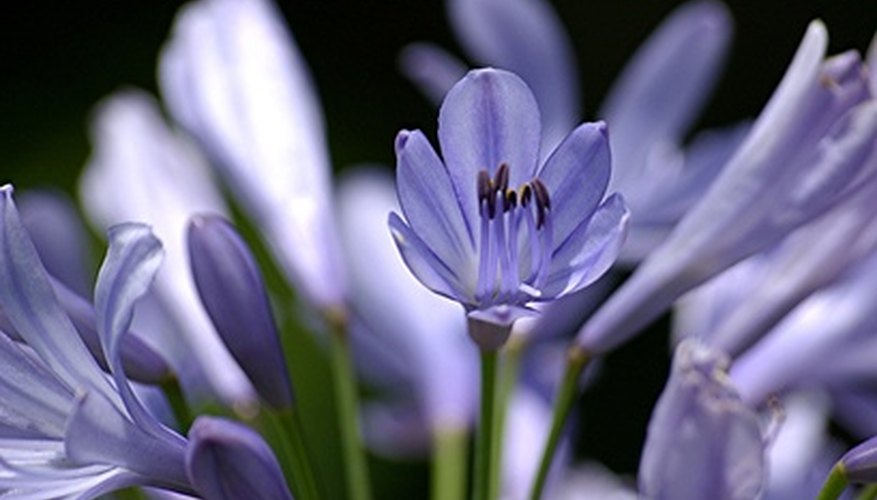Agapanthus, also called Lily of the Nile, or African lilies, are herbaceous perennials with sword-like leaves and pendulous flowers in shades of purple, blue and white. They are popular additions to border plantings, container gardens and flower beds. Most of the diseases that affect agapanthus are fungal, and are caused by poor drainage. If your agapanthus appears diseased, you will have to identify the condition to treat it. Sometimes, you can salvage a diseased agapanthus. Other times, you will have to sacrifice it to avoid infecting other plants in your garden. By becoming familiar with the different diseases that affect agapanthus, you will have a better idea of what course to take.
- Agapanthus, also called Lily of the Nile, or African lilies, are herbaceous perennials with sword-like leaves and pendulous flowers in shades of purple, blue and white.
- If your agapanthus appears diseased, you will have to identify the condition to treat it.
Check your agapanthus plant for signs of botrytis, also called grey mould. Look for brownish lesions, brown or silver-grey dusty spores on leaves and flower buds that fail to open. A recent spell of cool, humid or rainy weather makes a diagnosis of botrytis more likely.
- Check your agapanthus plant for signs of botrytis, also called grey mould.
Prune blighted flowers and leaves, making sure that the agapanthus plant is not wet with dew or rain at the time of pruning. Destroy any agapanthus that is infected with botrytis at the base of the plant. Use preventive fungicides on your remaining agapanthus the following season.
Check for root rot, a fungal disease caused by the Phytophthora and Phythium microorganisms, by checking plants for stems that are discoloured at the bases, and leaves--usually lower on the plant-- that are yellow and wilted. Roots of affected plants will be chocolate brown.
Remove and discard affected plants and surrounding soil; do not dispose of diseased plants on a compost pile. Use fungicide spray on the remaining agapanthus for a preventive measure, and improve drainage by adding pine bark to the soil. To avoid risk of introducing fungus, don't divide plants too frequently, never use unsterilised soil mix and don't overwater your agapanthus; saturated soil promotes the spread of root rot to healthy plants.
- Remove and discard affected plants and surrounding soil; do not dispose of diseased plants on a compost pile.
- Use fungicide spray on the remaining agapanthus for a preventive measure, and improve drainage by adding pine bark to the soil.
Check for the presence of the fungal disease Macrophoma agapanthii by looking for lighter green olive leaves with dead tips; these will tend to be at the middle of plant.
Cut back until you find healthy tissue, and burn the infected leaves. Spray agapanthus plants with the fungicide captab to prevent reinfection.
Check for fusarium wilt--also called bulb rot, and indicated by leaves collapsing and remaining on the plant--by cutting a stem lengthwise. If the plant has bulb rot, you will see brown and black lines inside the stem; there may also be a foul smell. This disease, which is caused by poor drainage, has no cure; you will have to remove and destroy the affected agapanthus and bulbs. Afterward, add vermiculite and organic compost to the area to aerate the soil and promote drainage.
TIP
If your agapanthus keep being infected by fungal diseases, consider improving soil drainage by raising the beds.
